Asturias Summer 2009
|
This trip encompassed the Summer meeting of the Newcomen Society and was organised with the help of incuna ( El Asociacion de Arqueologia Industrial ) Heritage of Industry is keen to develop relationships with other societies and associations to mount similar expeditions in Spain and elsewhere. The tour was based in Gijon on the North coast of Spain which is an important port and industrial centre for the region as well as a seaside resort with a long sandy beach, but with a packed programme in prospect members of the Society had little time to spend watching the bikini-clad (or less!!) sunbathers. On the first evening we started in style with a traditional espicha in a llagar outside the town, where we learned that an espicha is an informal party and a llagar is, in this case, a traditional family run cider press and restaurant. Cider is very much the local drink of Asturias and was to become something of a theme for the week. |
|
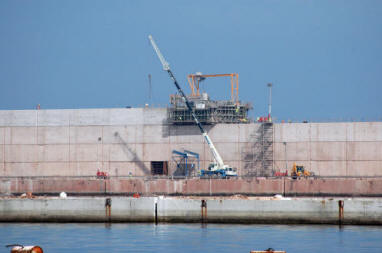 |
The next day our first visit was to the port at El Musel 6km from the town
centre. We were first shown a model of the massive new extension of the
port which is underway accompanied by an explanation from one of the engineers
on the project. The work involves building a new harbour wall out into the sea which will be subject to the full force of the waves sweeping in from the Atlantic. The wall will extend 1488m North then 1530m East and then a further 816m South to enclose an area of 140ha |
| A concrete plant has been
installed on-site creating blocks which are being dropped onto the sea
bed to form an immense barrier to resist the sea. In all about
130,000 blocks varying from 10T to 200T will be used. In total the construction will take about 2.6m cu m of concrete For a group of engineers it is always good to have another engineer as a guide as he is able to use technical language without too much fear of not being understood and of course is much better able to answer questions than even a well briefed but non-technical guide. |
|
|
We also had fun teaching some of the English technical terms to Bea Garcia, our local guide who looked after us so well.
We left the port to travel the short distance back into the centre of town to visit the Railway museum which is housed in the former Renfe station. The preserved building was built in 1872/3 and covers an area of 17,000 sq m |
|
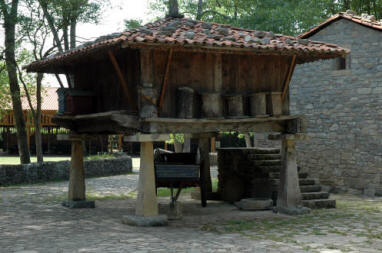 |
Following a splendid lunch on the seafront (the first of several lunches where the people of Asturias demonstrated remarkable hospitality, not to say generosity, with food and wine) we staggered to El Pueblo de Asturias Museum The Museum hosts a wide ethnographical collection as well as traditional musical instruments, old photographs, paintings, oral testimonies and personal and commercial documents. |
|
Wednesday was a day devoted to
hydraulic engineering. Our fist stop was at the hydro-electric dam at Arbon, which is not normally open to members of the public. The first dam here was built in 1905 under the direction of Luina Fernandez Alvarez. This ran until 1963 when it was dynamited and work on a new dam was started. We were made welcome by the chief engineer who gave us much in-depth information and allowed us access to the whole installation in a way we felt might not be allowed in the UK |
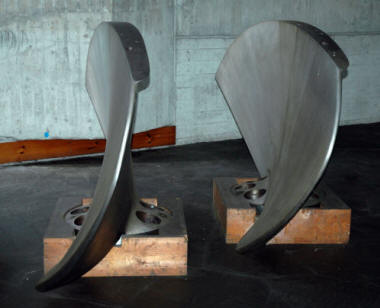 |
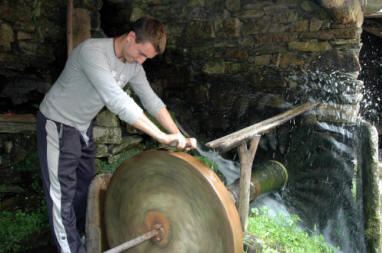 |
After another relaxed lunch we toured the Mazo de Teixois on the Mestas River about 3km from Taramundi. The Mazo is part of an ethnographic site related to the traditional use of hydraulic energy dating back at least to the 18th Century. Water from a weir is carried along a 250m channel to a reservoir on the site and thence by a number of simple valves to various devices. |
| For many the most impressive demonstration was of forging using a fire blown by a water trumpet and a water powered drop hammer. |
|
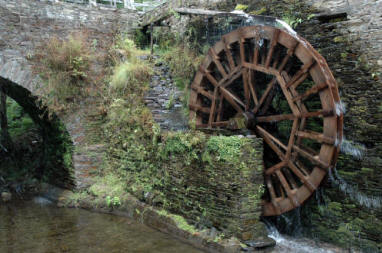 |
The day concluded with a visit to the Milling museum at Mazonovo
on the Cabreira River where
not only was there much water driving machinery there was also a considerable amount
falling out of the sky. When grinding flour the miller is paid in kind, receiving a proportion of the quantity ground. Asturian millers maintained their own system of measuring grain, starting with the galipu (about 4kg) : two galipos - one copin two copin - one zalemin four zalemin - one nega |
| Thursday morning saw us in Oviedo at the arms factory. This was a very special event because access is rarely granted to this establishment. Armaments have been manufactured in Oviedo since the 18th C and on this site since 1857. It is now manufacturing high technology components for the arms industry throughout Europe including, we were told, components for Rolls Royce military aero-engines. Again an engineer showed us many of the manufacturing operations but there were areas where we were not allowed to go, nor was any photography allowed inside the plant! | |
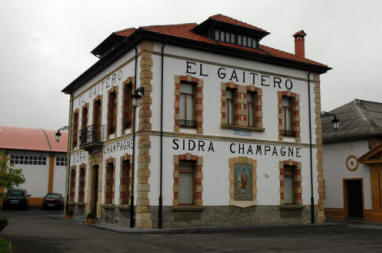 |
Of course the day would not be complete without a visit to a Cider
factory and, of course, a tasting. Despite what is written on the
side of the building, due to the tenacious lawyers of the French wine
industry, the product can no longer be called champagne but is
nonetheless delicious. Another very long lunch was followed by a visit to the Cider museum at Nava. |
|
Friday started with a visit to the Bustiello Mining Village in the Turon
valley. For
more than 200 years Asturias has contributed between 50% and 70% of the
national production of coal which was of course the main source of energy in
Spain between the mid 19th C and the end of the 20th C. Here it was explained that the houses were built between 1890 and 1925 for 'model' employees of the company. The village included a church (decorated with mining motifs), a sanatorium and a school. The employees were treated in a very paternalistic fashion and could be expelled from the accommodation for even minor misdemeanours. |
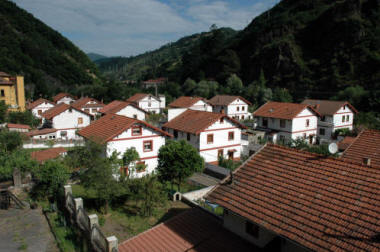 |
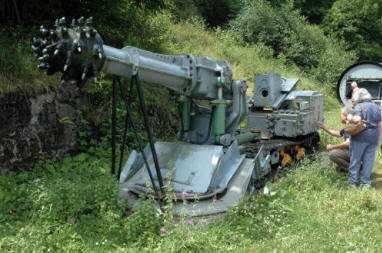 |
Following a very moving visit to a memorial at Pozo Fortuna for miners killed by soldiers under the command of Franco at the beginning of the Civil War we were able to examine some slightly more modern mining equipment. |
|
The tour ended at the Mining and Industry Museum. Amongst many fascinating exhibits was this replica featuring some of Watt's improvements to the steam engine . . . |
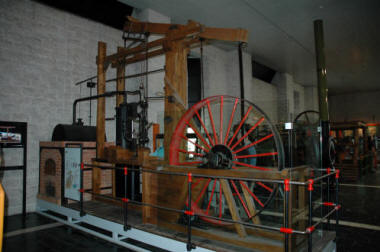 |
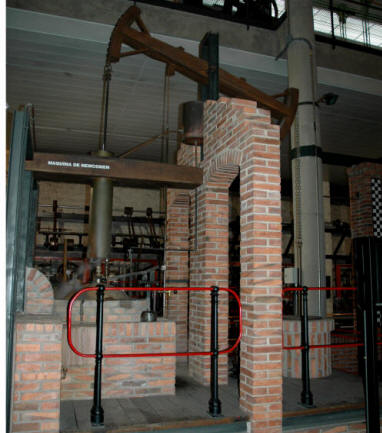 |
. . . but taking pride of place, as far as Society members were concerned, was the reconstruction of a Newcomen engine. |
All images © Bill Barksfield 2010
